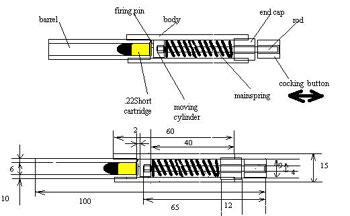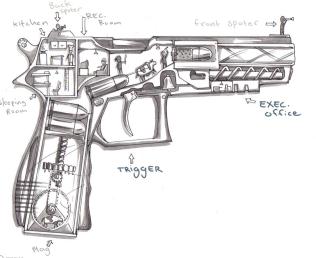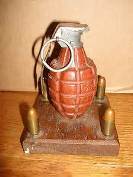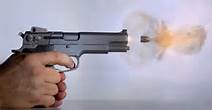“Guns don’t kill, people do.”
That is often repeated by the NRA, the pro-gun lobby and 2nd Amendment “purists” to defend the possession of firearms and to get guns off the hook after violent crimes. It’s such a seemingly logical turn of a phrase that it’s embraced in that community as Soundbite Gospel.
But, it belies the real situation and betrays solutions to gun violence.
Technically, what actually kills is neither a gun nor a person, but a small projectile usually made of lead that entered a victim anywhere from 700 to over 1900 miles per hour and tore apart a vital life support function.
The projectile is what does the actual killing, but obviously, as an inanimate object it has no authentic responsibility for the action; it is merely the function of the firing mechanism that propelled it toward the target.
 Having the same inert property as the bullet, the gun, by itself, has no criminal responsibility, either; a human being is required to set the mechanism into motion by pulling the trigger, and, therefore, bears the only true responsibility for the event. But this is where the gun supporters are led astray.
Having the same inert property as the bullet, the gun, by itself, has no criminal responsibility, either; a human being is required to set the mechanism into motion by pulling the trigger, and, therefore, bears the only true responsibility for the event. But this is where the gun supporters are led astray.
We tend to think of firing a gun as a one-step process, it is fired, but that over-simplifies the reality of what has happened and obfuscates solving issues of misuse.
In reality, the firing of a gun has 4 very distinct components and the event does not take place without all four coming into play in a sequence.
1) There is a CATALYST (the shooter)
2) There is the FIRING MECHANISM (the gun)
3) The PROJECTILE (usually a bullet)
4) And there is the TARGET (whether intended, or otherwise)
 Each component is equally significant to the function of a firearm. The bullet is to the target what the shooter is to the firing mechanism; a direct relationship where each is reliant on the application that puts it into motion, and it cannot escape the sequence.
Each component is equally significant to the function of a firearm. The bullet is to the target what the shooter is to the firing mechanism; a direct relationship where each is reliant on the application that puts it into motion, and it cannot escape the sequence.
You cannot remove the “target” from the sequence because that is the purpose of the process; to be hit. The “firing mechanism” is the vehicle to facilitate that result, and so it cannot be removed, as well. The only part of the shooting-model that can be influenced to change is the “shooter.”
The shooter motivates the shooting event, and therefore, is the only realistically responsible element, but this is where we have an accountability problem. Since it is impossible to know the true intentions of a shooter until after they have initiated the process, the only safeguard a society has is to regulate the shooter’s primary relationship in this process; their relationship with the gun itself.
So, how does that relationship share responsibility when the act is criminal?
When I was a kid, a friend’s dad had a paperweight that was a mounted grenade. I was always told by my friend that it was a “live grenade” and, of course, I believed it. I was told that if I pulled the pin it would still trigger the grenade.
Of course it wasn’t “live” but I had no way of knowing, so the philosophical question is: What was it’s primary purpose? Was it still a grenade or was it only a paperweight?
If one day the grenade/paperweight had exploded would that have been called an accident because it was a paperweight, or the fulfillment of its intention because it was a grenade?
A gun is, as the gun lobbyists say, innocent, because it requires intentions from a human being to carry out it’s function…but is it as benign, otherwise, as a paperweight?
No.
Neither the grenade or the gun can be removed from the kill-model they were created to be part of. This is what gun control is all about; recognizing that the gun and the shooter are inextricable from the process.
Doing our best to restrict the availability of firearms from those who shouldn’t possess them and creating logical accountability from those who do possess them, is the rational option for a functional society with the collective responsibility of protecting its citizenry.
There are no regulations that will eliminate criminal activity, but gun control advocates are not that delusional. Clearly, someone who does not follow “Thou Shalt Not Kill” is not likely to heed “Thou Shalt Not Have Guns” but what controls can do, are increase gun proficiency by mandating safety education, and decrease ease of accessibility so that responsible gun owners can be isolated from those who are not. And regulations create hurdles for the criminally inclined that can impede or redirect their relationship with a firearm.
It’s true, “guns don’t kill,” but, like the bullets they fire, and the shooter that pulled the trigger, they are part of one paradigm that does.